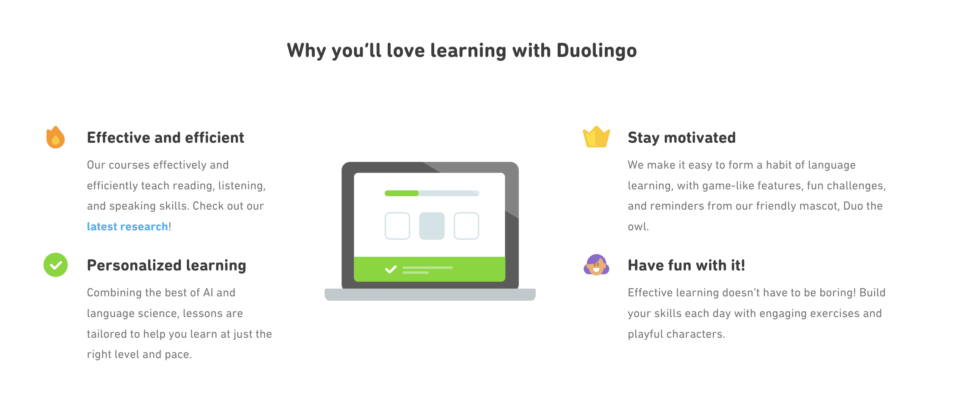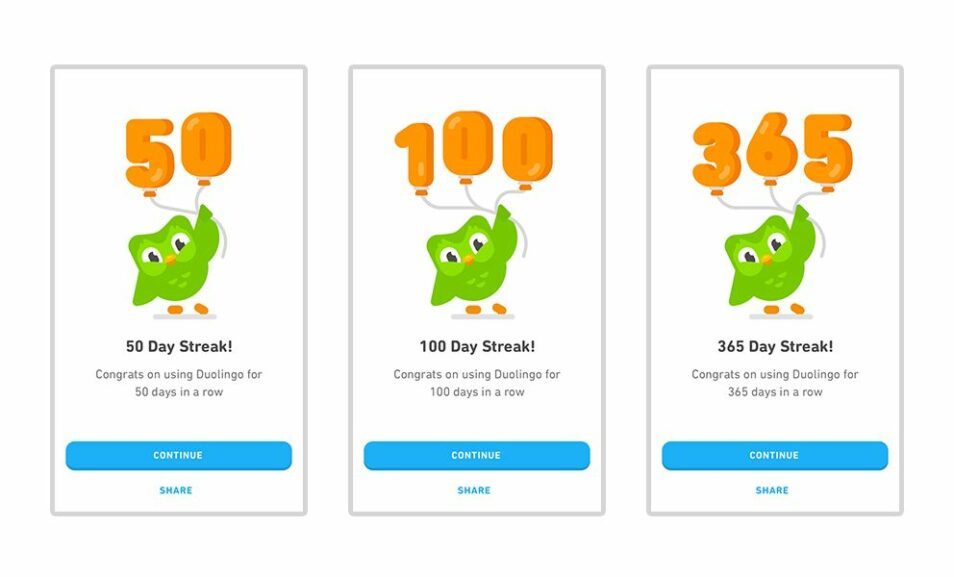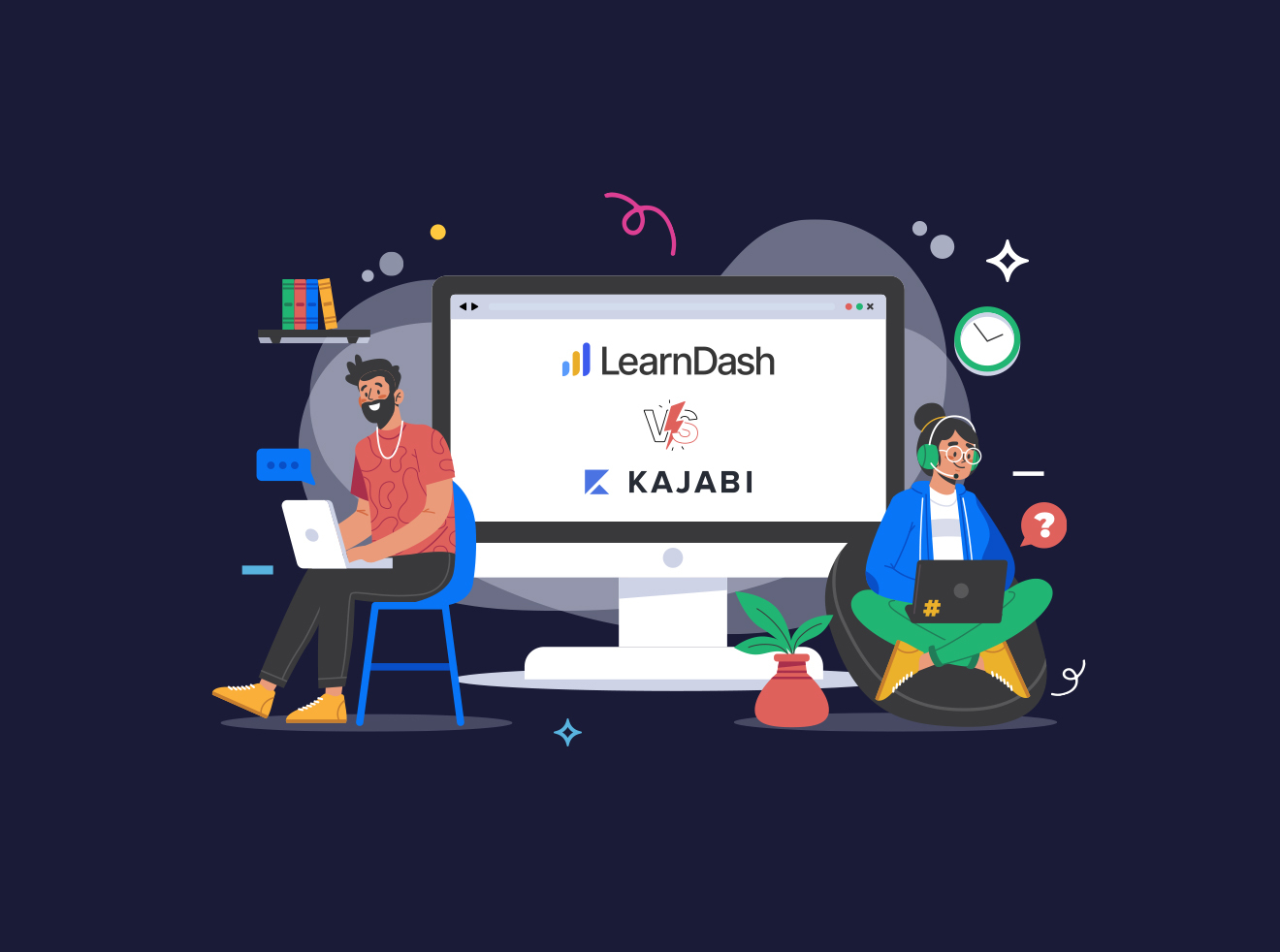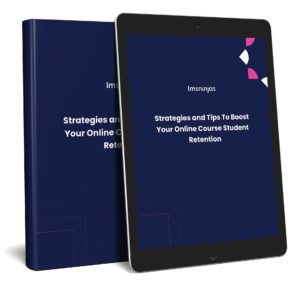Duolingo is an app that has revolutionized language learning for millions of people around the world. Since its launch in 2011, Duolingo has been downloaded over 500 million times and has an estimated 56.5 million monthly active users. According to a recent survey, Duolingo users are more likely to achieve fluency in their chosen language than users of other language learning apps.
So, what makes Duolingo different from other e-learning platforms? And how can you, like them, set yourself apart to obtain similar results with your online learning business? For starters, it uses a gamified approach to language learning, making it fun and engaging for users of all ages. Duolingo also uses machine learning algorithms to personalize the learning experience for each user, adapting the content to their learning style and pace.
But that’s not all. Duolingo has also successfully retained its users, with over 50% returning to the app after six months. How does it do this? Creating a sense of community through features like leaderboards, social media integration, and interactive discussions.
As we explore the 5 things we can learn from Duolingo about succeeding in e-learning, we’ll uncover valuable insights into what makes this app so successful. By applying these lessons to your e-learning platform, you can create a dynamic and engaging learning experience that keeps your users returning for more. So, let’s dive in!
Lesson #1: Gamification

Gamification uses game design and elements in non-game contexts to enhance engagement and motivation. Duolingo is one of the most successful e-learning platforms that use gamification to enhance the learning experience. Duolingo’s gamification strategy relies on points, badges, leaderboards, performance graphs, progress bars, and more.
How it Works
Duolingo’s gamification strategy deploys irresistible physiological triggers by asking users, “What will I get?” and triggering the urge to compare success with others. Duolingo uses universal compulsions to compete, plug into social needs, and create a sense of community.
One of Duolingo’s most successful gamification techniques is the streak. The streak challenges users to finish a lesson daily. The streak is represented by a little flame icon with a number next to it. The flame icon greys out and defaults to zero when a task is missed. Users will do anything to avoid the flame icon graying out, and Duolingo rewards passing the milestone.

Duolingo introduced the Streak Society in 2020. It is an exclusive club, and the criteria for joining is to have a 365-day unbroken streak. This creates a sense of luxury and impatience, appealing to the user’s social needs.
Duolingo uses other gamification techniques such as leaderboards and leagues, experience points (XP), and progress bars. Moreover, Duolingo is notorious for its constant notification bombardment. The notifications drive the player to believe that they are doing something greater than themselves or have been “chosen” to do something.
Use Case Example: Implementing Gamification for a Healthcare E-Learning Platform
Suppose you are developing an e-learning platform for healthcare professionals who want to improve their knowledge of medical devices. In that case, you can implement gamification in your platform using the following steps.
1. Use Progress bars
Medical device training requires the completion of various tasks, such as identifying parts, understanding their functions, and learning how to use them. Implementing progress bars for each task and the overall course completion provides a sense of accomplishment and encourages learners to continue.
2. Create a leaderboard
Healthcare professionals are often competitive and driven by their accomplishments. Implementing a leaderboard that displays the top learners’ names and achievements in the course can motivate learners to improve their performance.
3. Award Badges
Badges can acknowledge learners’ accomplishments, such as completing a specific task or achieving a specific score. This recognition can encourage learners to continue learning and earn more badges.
4. Implement Challenges
Challenges can encourage learners to complete a specific task, such as taking a quiz or watching a video. Completing the challenge can unlock additional content or earn the learner extra points.
5. Offer Rewards
Offering rewards for completing specific tasks, such as a certificate or continuing education credits, can provide learners with an additional incentive to complete the course and continue learning.
Lesson #2: Micro-Learning
“Nobody’s got time for that”.
According to a survey by Bersin by Deloitte, the average employee has only 24 minutes per week for training. Microlearning can be an effective way to deliver training in bite-sized chunks that can be completed quickly.
Microlearning is an approach to learning that involves breaking down content into shorter learning units for rapid consumption. This method is effective for learners with limited time, as it allows them to fit in learning activities during small pockets of downtime throughout their day. Duolingo, the language learning app, has successfully implemented a micro-learning approach in its platform.
How Duolingo Implements Micro-Learning
In the world of e-learning, the concept of microlearning has gained traction in recent years.
Duolingo’s microlearning approach is based on the idea that people learn best when having fun. However, simply adding gamification to learning content is not enough.
The fun factor is lost if the content is too overwhelming or difficult to digest. Duolingo’s solution is to provide content in small, digestible chunks, with a maximum learning time of five to twenty minutes daily.
Users can easily fit these shorter learning sessions into their daily routine, such as during a lunch break or waiting for a friend.
Key Points of Duolingo’s Micro-Learning Strategy
Machine Learning
Machine learning is a crucial factor that makes Duolingo’s microlearning strategy effective. This feature allows users to win after a few attempts, creating a sense of positive reinforcement that encourages users to keep coming back. Additionally, the progress bar feature shrinks or expands based on user performance, adding an element of challenge that keeps users engaged.
Multiple Task Choices
Duolingo’s microlearning strategy also incorporates multiple-choice questions, listening, speaking, and other interactive tasks to keep content fresh and engaging. Moreover, they utilize A/B testing to experiment with different features and analyze which ones work best for their users. For instance, more users stuck with the app when Duolingo switched from hearts to progress bars.
Use Case Example: Breaking Down Lessons into Smaller Topics
To implement a microlearning strategy in your e-learning platform, you can learn from Duolingo’s approach and break down lessons into smaller topics.
Doing so can create a more digestible learning experience for your users. Here’s an example:
Suppose you’re creating an e-learning platform to teach coding. Instead of providing a large amount of coding content in one lesson, you can break it down into smaller topics, such as:
- Introduction to coding
- Variables
- Data Types
- Loops and Conditionals
- Functions
- Object-Oriented Programming
- Web Development Basics
Here are the steps you can take to break down your lessons into smaller, more digestible topics:
1. Analyze Your Content
Look at your current e-learning content and identify areas that can be broken down into smaller topics. For a programming language, you could break down a larger topic like “Loops” into smaller topics like “While Loops,” “For Loops,” and “Nested Loops.”
2. Identify Your Learners’ Needs
Use data to identify your learners’ weak spots and pain points. This will help you determine which topics to break down further and which ones may need additional mini-modules.
3. Create Bite-Sized Modules
Once you’ve identified your smaller topics, create bite-sized modules that can be completed in a short amount of time. Duolingo’s microlearning modules are typically 5-20 minutes long, so consider using a similar timeframe for your modules.
4. Use Different Learning Approaches
Just like Duolingo uses a mixture of multiple choice, listening, and speaking exercises, consider using a variety of learning approaches to keep your learners engaged. This could include videos, quizzes, interactive exercises, and more.
5. Track Progress and Encourage Mastery
Use data to track your learners’ progress. Encourage Mastery by awarding badges and tokens for completing modules and achieving streaks. Consider offering mini-modules to target specific weak spots and provide extra practice.
Lesson #3: Personalization
Personalization is a crucial strategy in creating a dynamic and engaging e-learning platform. By personalizing the learning experience for each user, you can cater to their individual needs and learning styles, ultimately leading to better outcomes. Duolingo, the language learning app, has successfully leveraged the power of personalization to create a unique and effective e-learning platform.
How Duolingo Uses Personalization
Duolingo uses a combination of humans and AI in its course creation process. AI plays a more significant role in the stages that require scale and personalization. The process is divided into four stages:
- Curriculum development
- Raw content creation
- Exercise creation, and
- Lesson personalization.
AI determines which exercises to show a given learner at a particular time during the lesson personalization stage based on their specific needs.
Duoling Personalized Courses
Duolingo courses have a predetermined structure, with a specific sequence of lessons and a pool of exercises available for each lesson. However, each lesson that a learner sees is unique. The platform uses compelling real-life scenarios to illustrate each learning objective and machine learning algorithms to personalize the learning experience for each user.
For example, users start with Duolingo’s AI-driven adaptive placement test, which probes them with exercises they would take during the course. The test is adaptively chosen based on the previous question and whether the user got it right or wrong. This allows users with existing language skills to skip to more advanced lessons, creating a personalized learning experience.
Duolingo Skill Strength Meter
Duolingo also uses a skill strength meter AI to track how well a user remembers each skill, so they can go back and practice at the right time. Using machine learning to understand the user, Duolingo’s AI system, Birdbrain, can accurately predict their learning journey and ensure a personalized experience.
Use Case Example: How to Implement Personalization in Your Learning Management Solution
To implement personalization in your e-learning platform, you can start by analyzing the data you have about your users. This data can include their learning history, performance, and preferences. Use this information to create a personalized learning path for each user, adapting to their needs and pace.
For instance, in LearnDash LMS, you can use the WooNinjas Adaptive Learning Pro add-on to personalize the learning experience for your users. This add-on uses machine learning algorithms to personalize the content and pace of the course based on the user’s progress and performance.
Let’s say you’re creating an e-learning platform for teaching coding skills. To implement personalization strategies from Duolingo, you could:
- Use an AI-driven adaptive placement test to assess the user’s coding skills and knowledge.
- Create a predetermined course structure with a specific sequence of lessons and exercises available for each lesson.
- Use machine learning algorithms to personalize the learning experience for each user by selecting the most relevant exercises based on their skills and progress.
- Implement a skill strength meter AI to track the user’s performance and suggest practice exercises at the right time.
- Use interactive discussions and leaderboards to create community and engagement among users.
By implementing these personalization strategies, you can create a unique and engaging learning experience for your users, just like Duolingo.
Lesson #4: Immediate Feedback
Immediate feedback is a crucial component of effective learning. It is defined as providing learners with prompt and specific information about their performance, so they can recognize and subsequently avoid error patterns. Duolingo has successfully implemented this strategy to help learners achieve their language learning goals.
How Duolingo eLearning Platform Explores and Implements Immediate Feedback
Duolingo provides instant feedback to learners, indicating whether their response is correct or incorrect. However, the platform does not allow learners to immediately self-correct and explore the error made. Instead, Duolingo’s learners receive feedback through smart tips.
Smart tips pop up right when a mistake is made, explaining the grammar rule or pattern to help the learner get it right next time. The smart tip provides helpful information with the mistake fresh in the learner’s memory. The learner gets to practice applying the rule.
The fundamental strategy of immediate feedback as implemented by Duolingo
In their eLearning platform, Duolingo ensures smart tips do not appear after every mistake because they do not want learners to feel overwhelmed. The platform’s smart tips feedback has the following features:
- Simple, straightforward explanations
- Immediate: they pop up right after the learner makes a mistake.
- Personalized: Duolingo’s machine learning algorithm analyzes the error the learner makes.
- Explicit: they state what to pay attention to and what the rule is.
- Elaborate: they show more than just “incorrect” so the learner can better understand the pattern.
- Bite-sized: the smart tips feedback is designed to be concise and easily understood.
Use Case Example: Implementing Immediate Feedback in an eLearning Platform
Immediate feedback can be a powerful tool for improving learning outcomes in eLearning platforms. Here’s an example of how an eLearning platform can implement the key strategies of immediate feedback based on the lessons learned from Duolingo:
Setting up the eLearning Platform
First, the eLearning platform should be set up with the following features:
- A user-friendly interface that allows learners to easily navigate the platform and access content.
- Learning materials that are clear, concise, and engaging.
- Interactive exercises and quizzes allow learners to practice and apply their knowledge.
Providing Immediate Feedback
Next, the platform should provide immediate feedback to learners in the following ways:
- Correct/incorrect notifications: When a learner completes an exercise or quiz, the platform should provide immediate feedback on whether the answer is correct or incorrect.
- Smart tips: The platform should use machine learning algorithms to provide learners personalized, explicit, and elaborate feedback. Smart tips should pop up immediately after a mistake is made and provide learners with simple, straightforward explanations of the grammar rule or pattern they got wrong. These tips should be bite-sized and designed by teaching experts and machine learning engineers.
- Audio feedback: Besides written feedback, the platform should provide audio feedback to learners, which can help reinforce correct pronunciation and intonation.
Analyzing Learner Progress
To make the most of immediate feedback, the platform should also analyze learner progress in the following ways:
- Error analysis: The platform should use machine learning algorithms to analyze learners’ errors and provide targeted feedback and resources to help them improve.
- Progress tracking: The platform should track learners’ progress over time and provide personalized feedback on areas where they excel and need more practice.
Lesson #5: Social Learning
One critical factor that sets Duolingo apart from other e-learning platforms is its focus on social learning. Social learning refers to the idea that people learn best when interacting with others, sharing knowledge and experiences, and receiving feedback and support from a community. Duolingo recognized this and implemented social learning features that have contributed significantly to its success. This section will examine Duolingo’s social learning strategy and what makes it stand out.
Duolingo Language Clubs
One of the most prominent social learning features on Duolingo is the Language Clubs. Launched in 2017, Language Clubs allow users to create or join groups with other learners who share their language goals. Some of the features of Language Clubs include:
- Users can track each other’s progress and interact through a game-style interface.
- Each Language Club has a leaderboard displaying top-performing members, fostering friendly competition and motivation.
- Users can also communicate with each other through comments and direct messages, providing a sense of community and support.
Duolingo CEO Luis von Ahn believes that Language Clubs have motivated and engaged users. By connecting learners with others who share their goals, Language Clubs provide a sense of accountability and motivation that can be hard to find when learning alone.
Duolingo Owl Memes
Another aspect of Duolingo’s social learning strategy is its use of humor and relatability to engage users. In 2017, memes featuring the Duolingo Owl started circulating on social media. The owl character appeared in various scenarios, often accompanied by humorous and slightly threatening captions. These memes helped to create a sense of familiarity and connection with the Duolingo brand, making it more memorable and shareable.
Takeaways for Other E-Learning Platforms
So, how can other e-learning platforms learn from Duolingo’s social learning strategy? Here are some key takeaways:
- Implement social learning features that allow users to connect and interact with others who share their goals.
- Provide a sense of community and support through features such as comments, direct messaging, and leaderboards.
- Use humor and relatability to engage users and make your brand more memorable.
How To Implement Duolingo Social Leaning In Your E-Learning Platform
Various options are available if you want to implement social learning into your e-learning platform. One popular choice is to use a learning management system (LMS) with built-in social learning features.
One such LMS is BuddyBoss, built on WordPress and offers a range of social learning features, including user profiles, activity feeds, and group discussions. With BuddyBoss, you can create online communities for your learners, allowing them to collaborate and share knowledge.
Another option is to use add-ons for existing LMS platforms, such as LearnDash. For example, the WooNinjas group chat add-on for LearnDash allows learners to chat with one another in real-time, fostering collaboration and peer-to-peer learning. The Buddy Up add-on, on the other hand, matches learners with study partners based on shared interests and learning goals, creating a personalized and social learning experience.
When implementing social learning in your e-learning platform, it is vital to remember your learners’ goals and how social learning can support them. Additionally, you should consider the social learning features that best suit your learners and their learning needs.
For example, let’s consider an e-learning platform focused on teaching graphic design skills. Here’s how they could implement social learning based on the lessons learned from Duolingo:
- Create a “Design Community” feature that allows users to join or create groups based on their interests and goals.
- Provide a leaderboard displaying top-performing members, encouraging friendly competition and motivation.
- Include a comment section where users can share their work and receive feedback from others.
- Use social media platforms to share user-generated content, such as design challenges or tutorials, and create a sense of familiarity and connection with the brand.
DuoLingo eLearning Success Story
We’ve explored the 5 things we can learn from Duolingo about succeeding in e-learning. We started by looking at Duolingo’s gamified learning approach, making it fun and engaging for users of all ages. Then, we talked about how Duolingo personalizes the learning experience for each user, adapting the content to their learning style and pace.
We also discussed the importance of clear and concise feedback and Duolingo’s use of bite-sized lessons that users can complete in just a few minutes a day. Lastly, we explored the power of social learning and how Duolingo has successfully built a sense of community among its users through features like language clubs, leaderboards, and interactive discussions.
By applying these lessons to your e-learning platform, you can create a dynamic and engaging learning experience that keeps your users returning for more.
The world of e-learning is constantly evolving, and the demand for quality e-learning platforms is higher than ever. By keeping these 5 lessons in mind, you can create an e-learning platform that meets the needs of your users and helps them achieve their learning goals. So, get out there and start creating! Need help creating or upgrading your online course? Don’t hesitate to reach out to our LMS experts.




